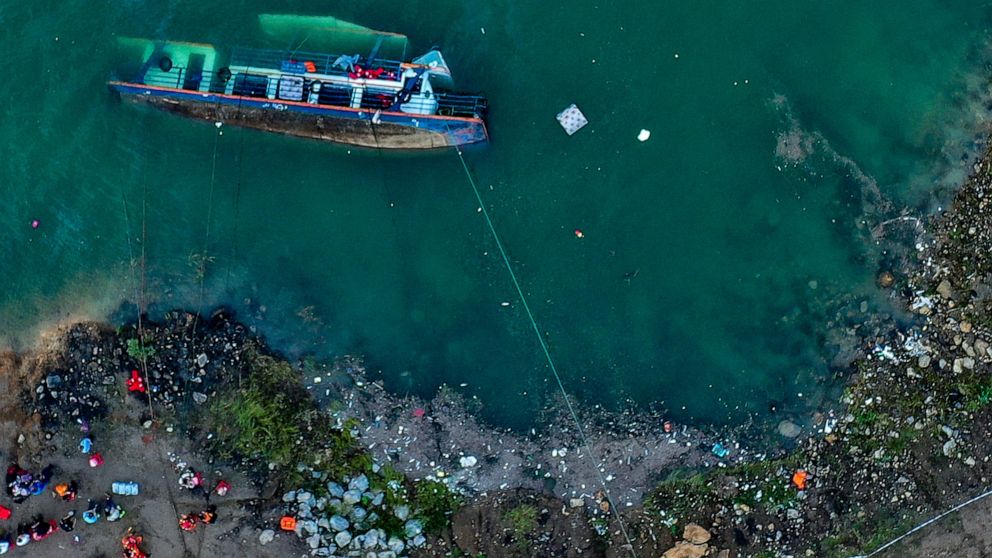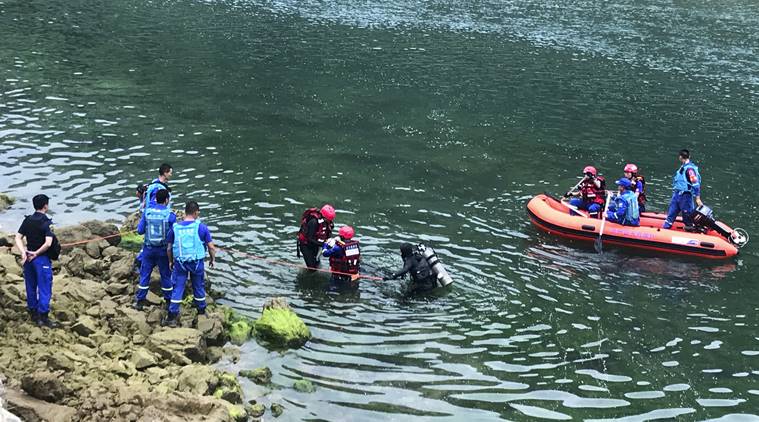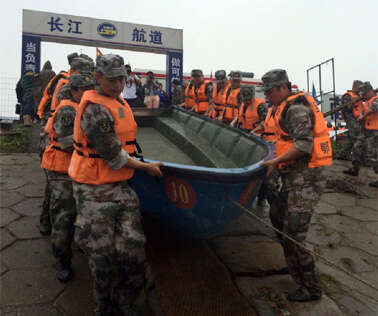A boat that capsized on a river in southwest China has left at least 10 people dead, with another five still missing, according to state media on Sunday.
The captain was among 11 people rescued after the capsizing in remote Banrao village of Guizhou province.
Police took the captain into custody. The injured are being treated in the hospital.
CCTV said that the ship overturned shortly after it departed Saturday evening in Guizhou Province China. Preliminary investigations suggest that the ship was blown over by strong winds.
China Ministry of Emergency Management says the vessel was a motor-powered iron boat that was “self-built,” rather than obtained from an industrial manufacturer.
Transportation accidents on China rivers and other waterways have become much rarer in recent years as the government emphasizes safety.
SEE ALSO: The best islands in the world
It was reported in 2015 that, the cause of the sinking in the Jianli region of central Hubei province was not immediately clear, but CCTV said it was an accident.
Broadcaster CCTV said that one body had been recovered, and just 10 people rescued so far from the Dongfangzhixing, or “Eastern Star” which sank late Monday en route from the eastern city of Nanjing to the southwestern city of Chongqing.
In a report that raised hopes of more survivors, it said that rescue divers knocked on the boat and detected responses from inside, but did not elaborate.
The cause of the sinking in the Jianli region of central Hubei province was not immediately clear, but CCTV said it was an accident.
Among those rescued were the captain and chief engineer of the vessel, who both reportedly said it had been caught in a “cyclone”.
There were 458 people on board when the vessel sank at 9:28 pm (1328 GMT), CCTV said, including 406 Chinese passengers, five travel agency workers and 47 crew members.
Advertisement
China News Service cited Yao Wenge, of the Nanjing maritime affairs administration, as saying 406 passengers went on board in the eastern city of Nanjing.
The Hubei Daily newspaper quoted an unnamed official with the Yangtze maritime affairs administration as saying that one group of passengers sent by a tourism agency in Shanghai were aged between 50 and 80 years.
According to CCTV, the vessel — which measures 76.5 metres long (250 feet) in length) — is capable of carrying up to 534 people, and was owned by a firm that operated tours in the Three Gorges dam region, which is some distance from the accident site.
The sinking occurred in the middle reaches of the Yangtze, which at 6,300 kilometres (3,900 miles) is China’s longest.
The Xinhua news agency said China’s President Xi Jinping issued an order for “all out rescue efforts” to proceed while Premier Li Keqiang deployed a work team from the State Council, China’s cabinet, to direct the search and rescue work.
Li, together with Vice Premier Ma Kai and State Councillor Yang Jing, were on their way to the site, the news agency said, adding that the transport ministry and other departments were told to throw all available resources into the rescue.
China’s Communist Party leaders are sensitive to the handling of disasters as any missteps or delays can lead to criticism of their effectiveness to govern.
Xi also called for officials to heed lessons of the past and to take more effective measures to protect people’s lives, Xinhua said.
Reaction to the the sinking was relatively muted on Chinese social media, though some critical voices emerged.
On Sina Weibo, a Chinese version of Twitter, one user complained that the TV coverage was insufficient.
“When the South Korean ship sank, it was on TV 24 hours a day,” the user posted, referring to the Sewol ferry disaster in April last year.
That ship was carrying 476 people when it went down off the southwest island of Jindo, killing 304 people, 250 of whom were pupils from the same high school.
Another user called for calm and said that blame should not be assigned too hastily.
“At this moment, the captain is automatically held accountable by some people,” the post said.
“But the ship sank within two minutes, it’s an instinctive reaction for the captain to save himself. Just hope more people will be rescued and the weather monitoring system to be improved.”
China’s high-speed trains and air networks are the backbone of national transportation. But recent maritime accidents include the January sinking of a tugboat on the river between the eastern cities of Jingjiang and Zhangjiagang, which killed 22 people, including eight foreigners.
After the January accident, the provincial government said the boat was undergoing trials without properly completing required procedures.
Asia’s long history of boat disasters
– March 2015: A boat carrying more than 200 passengers and crew in Myanmar’s western Rakhine state capsizes, leaving at least 61 people dead.
– February 2015: A ferry accident in central Bangladesh leaves 69 people dead, just a fortnight after five others were killed when an overloaded ferry sank in the country.
– January 2015: Twenty-two people, including eight foreigners, are killed after a tugboat sinks on a trial voyage on the Yangtze.
– October 2014: At least 17 people from a wedding party die after their boat sank on its way to the Indonesian island of Bali. The previous month, another boat sank, leaving 14 others dead.
– April 2014: The Sewol ferry sinks off the coast of South Korea. Of 476 of the mainly school children on board, 304 die. The boat’s captain is later sentenced to 36 years in prison.
– August 2013: At least 71 are killed and 49 go missing when the St. Thomas Aquinas ferry sinks after it collides with a cargo ship near Cebu, Philippines.
– June 2012: A boat carrying around 200 asylum seekers going from Indonesia to Australia capsizes north of Christmas Island. Of the Afghan and Pakistani men and children on board, at least 73 are never found.
– April 2012: A total of 203 people are killed or go missing when a ferry sinks in India’s Brahmaputra river during a storm in the northeastern Assam state.
– January 2009: At least 235 people are killed when a ferry goes down during a storm off the island of Sulawesi, Indonesia.
– June 2008: The Princess of the Stars ferry sails into a typhoon and tips over near the coast of Sibuyan island, Philippines. Of the 850 people on board, only 57 survive.
– October 2001: An Indonesian fishing boat known as the SIEV-X sinks en route to Australia, carrying 421 passengers, mostly Iraqi and Afghan refugees. Of those, 353 die, 146 of them children, in the most deadly incident involving refugees in Australia’s history.
– December 1987: The Philippines ferry Dona Paz sinks after colliding with the oil tanker Vector: 4,386 die in what is the world’s worst maritime disaster outside of wartime.
– May 1986: Around 600 people are killed when a storm overturns a boat named Samia in Bangladesh’s Meghna river, the worst ferry disaster in the country’s history.
– September 1954: The Japanese ferry Toya Maru sinks in the Sea of Japan between the northern islands of Hokkaido and Honshu when caught in a major typhoon. At least 1,150 die.
– March 1921: Around 1,000 are killed when the Singapore ocean liner Hong Moh is wrecked on Lamock island in the South China Sea.
– September 1912: A Japanese steamship, the Kiche Maru, sinks off the eastern island of Honshu during a typhoon. More than 1,000 die.







